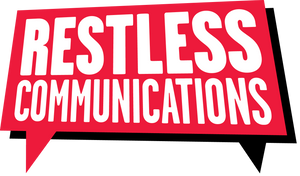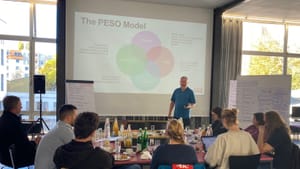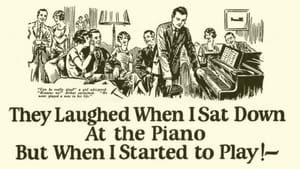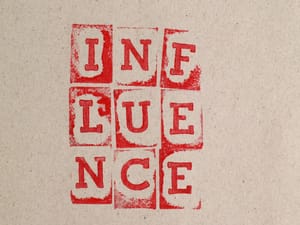A strategic deep dive into a communications framework that still earns its keep
Let’s start with the basics. The PESO Model©—short for Paid, Earned, Shared, and Owned media—is a framework for thinking holistically about how your organisation communicates with the outside world. It was created by Gini Dietrich, and was initially set out in detail in her blog - Ultimate Guide on Spin Sucks.
"Spin Sucks: Communication and Reputation Management in the Digital Age" - the book which formally introduced the model is still well worth a read. Even more than 10 years after she introduced the model in 2014.
At Restless Communications, we've been using PESO (or versions of it) before we ever knew of it.
Since working on national behaviour change campaigns in the early 2000s, we've always worked alongside digital content, advertising, direct mail and PR teams to ensure we deliver a joined-up communications strategy.
Way before setting up Restless Communications, Chris Reed launched the HMRC's first ever Facebook paid advertising campaign (encouraging students to apply for tax refunds they were eligible for), led the Government's Talk to Frank PR team (to have a grown up conversation with young people about drugs), persuaded community leaders to share important information relating to the introduction of London's Congestion Charge, and led the owned and content teams running social for brands ranging from from Aperol through to the Where's Wally? brand.
PESO is a great way to formalise our approach to creating integrated communications campaigns. It's also a great way to present that integrated strategic thinking to clients.
We use PESO as a lens. A way of stress-testing whether a communications plan is truly integrated. And we use it to help fill in the gaps, too.
We build it explicitly into our strategy documents. And we use it in practice.
Whether we're helping an EU institution explain the importance of pensions to teenagers, or talking to an umbrella body sharing best practices amongst retailers, or training human rights organisations in how to get their messages across , the PESO model helps us think bigger and communicate smarter.
Why was the PESO Model created in the first place?
Back when we started, PR meant generating coverage in print and broadcast media.
Owned media was limited to annual reports.
Paid media was someone else's problem.
And social media didn’t exist.
Of course, we worked with our public affairs colleagues to try and help with 'word of mouth' influence.
But that was before 'word of mouse' became the norm.
Over time (in fact, not much time really) all those silos broke down. We soon started operating in a world where communications had to work across dozens of platforms, with multiple stakeholders, each with their own habits and expectations.
Enter PESO. Developed to bring structure to this complexity, Gini Dietrich's model maps out four distinct types of media:
- Paid: Anything you pay for—advertising, influencers, sponsored content, promoted posts, etc.
- Earned: Media coverage, third-party endorsements, organic mentions
- Shared: Social media engagement, reposts, community interaction
- Owned: Channels that you own. Your website, newsletter, white papers, blogs, reports, photography and videos
What makes the model powerful isn’t the labels themselves. It’s the discipline it forces. The best communications campaigns - and the ones we're most proud of working on - have always been truly integrated.
The PESO model makes it easier to ensure that every campaign is truly integrated.
Why the PESO Model still matters
We’ve been working in communications strategy for almost 30 years. We’ve seen frameworks come and go.
Like the UK Government's OASIS approach to developing communications strategies, PESO remains useful.
Why? Because it helps to cut through the noise and add specifics.
In a typical client brief, we’ll hear things like:
- “We want to raise awareness.”
- “We want to change attitudes.”
- “We want to be seen as thought leaders.”
Every client knows that our next question when we hear all of those is 'why?', and then 'how?' and 'when?' (Oh, and obviously...'what's your budget?')
After that, we'll turn their answers into SMART objectives.
We'll add in our audience-first analysis alongside our desired outcomes.
And then work out the PESO mix to get there.
We will go round each quadrant to help us deliver the right mix of channels to reach our objectives.
In our experience, the model helps us:
- Challenge over-reliance on any one channel (often Earned)
- Make the case for better Owned content (yes, the content on your own website can always be better)
- Bring discipline to clients Paid media (sorry, but the social channels have been pay-to-play for some time now)
- Plan for how your ideas will be Shared (by looking for genuine influencers. People or organisations and channels who buy into your vision and don't need $$ to persuade them to share it)
How we use PESO in practice
In our communications strategy work
We use PESO grids to map out messaging, channels, responsibilities and success criteria. It helps organisations move from vague ambition (“Let’s get coverage”) to actionable planning (“What is the Paid and Shared strategy that best reaches our audience?”).
In campaign development
When working with NGOs and institutions on public campaigns, PESO helps us go beyond single outputs. It shapes multi-touchpoint journeys: thought leadership (Earned), downloadable toolkits (Owned), animations (Shared), and paid reach to get it all seen.
In crisis communications
Preparation is everything. If you're running comms for any organisation, you need your Owned content ready well before any crisis hits. You need to make friends before you need them. You'll never generate the sort of Earned coverage you want unless you have already built up that trust with media in advance. You need to consider what you do and don't want Shared. And how to get there. And yes, sometimes Paid content to apologise fast and/or to counter misinformation.
Unsurprisingly, the PESO model is built into our 5-step crisis framework.
Where PESO needs interpretation
No framework is perfect. In government and policy contexts, “Paid” is often politically sensitive. In regulated industries, “Shared” might come with constraints. But that doesn’t mean the model breaks down.
Instead, we use PESO to ask better questions:
- What Paid equivalents are acceptable here? (e.g. SEO investment)
- How do we define success in Shared, when the community is niche or specialised? Depth is often more important than breadth
- Who ‘owns’ Owned in our team? Is there a plan for it? One person needs to ultimately take control. We help clients work out who that should be.
The model never replaces good judgement. It supports it. And it's extremely adaptable.
Common pitfalls the model helps expose
In our experience, the bigger the organisation, the more siloed it tends to be.
Indeed some of our projects (e.g. for Sky TV) have been to break down those silos.
To create a more matrix structure for communications teams. So that every element of the communications strategy reinforces and amplifies the others.
The sorts of issues we find the PESO model can help address are:
- The siloed comms team where social, press, and content teams act too independently from each other
- The Owned vacuum where great campaigns have nowhere to live long-term. Putting something on social is a tactic, not a strategy
- The Earned obsession where everything relies on media coverage. Even the best media relations relies on a news agenda that's outside your control
- The Paid-afterthought where budget arrives too late to make any difference at all
- The Shared shrug where community engagement is left to chance
Use PESO to develop an integrated communications strategy
The PESO Model is not a magic wand.
It’s a valuable model that can help shape thinking.
It helps us develop communications strategies to reach the right people at the right time with the right messages that encourage them to do, think, say, or feel something different.
It helps us develop communications strategies which are truly integrated.
And it helps our clients
- Make better decisions
- Avoid waste
- Reach the audiences they want to
- Deliver real impact
Want help applying PESO to your comms plan?
We can help. Whether you're rethinking your entire strategy or simply want a second opinion, get in touch. We can help develop a communications strategy which takes the most relevant elements of PESO, OASIS and other models to apply them to your challenge
And if you want to know even more about the model itself, check out the Certification offered by Spin Sucks and the S.I. Newhouse School of Public Communication.






